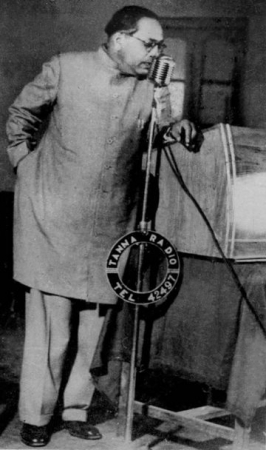Jitendra Suna
 In the primary phase of colonialism, Edward Tuite Dalton’s work Descriptive Ethnology of Bengal, played a crucial role in the incorporation of upper caste elite in the colonial structure while excluding the vast majority of the population including Adivasi, Dalit and lower castes. It also portrayed the Adivasi and lower castes as savage and who therefore needed to be civilized. This is a small attempt to critically review Dalton’s projection of Kond/Kand1 (hereafter Kand) and Gond/Gand2 (hereafter Gand) tribes in Descriptive Ethnology of Bengal.
In the primary phase of colonialism, Edward Tuite Dalton’s work Descriptive Ethnology of Bengal, played a crucial role in the incorporation of upper caste elite in the colonial structure while excluding the vast majority of the population including Adivasi, Dalit and lower castes. It also portrayed the Adivasi and lower castes as savage and who therefore needed to be civilized. This is a small attempt to critically review Dalton’s projection of Kond/Kand1 (hereafter Kand) and Gond/Gand2 (hereafter Gand) tribes in Descriptive Ethnology of Bengal.
Without understanding colonialism and its strategy, it is very difficult to grasp the root of anthropology and its implications on the colonized society. In India and other colonized countries, it was the colonial administration which wanted to know more about the colony and its peoples in order to rule over them. The origin of anthropology in India lies in colonialism and its aim and objective to study the ‘colonial subject’3. Anthropology began as a colonial handmaiden to study the culture, religion, people and their history of colonies in order to rule over them. One of the most influential scholars on colonialism and the Indian colonial history Nicholas B Dirks mentions that the colonial ethnographic materials taken from colonial administrative documents were written as part of the early effort to pacify, conquer, and exploit India. In other words, anthropology was the handmaiden of colonialism which is deeply rooted in colonial governmentality (Nicholas Dirks 2001:199).
One of the important points Nicholas Dirks raises in his work The Crime of Colonialism was how the writing of anthropology in India is influenced by the colonial notion of anthropology. According to him all anthropology needs field work and this field work is based on the text and textual knowledge provided by the native pundits and intermediaries4. Another Anthropologist Peter Pels who analyzed (period 1833- 69) the 19th-century transformation of Orientalism into ethnology where two kinds of processes were started by British, one was the racialization of caste and another one was the colonial subversion of the Indian body (Peter and Salemink 2000:83). Another important feature of colonial anthropology was ‘caste’.
Referring to William Crooke, Herbert Risley and Richard Carnaic Temple, Raheja mentions that the discourse about caste came to predominate in the colonial representation of Indian society for the purpose of colonial administration and it became essential to the colonial project in the last three decades of the 19th century5. Through his study, he comes to the conclusion that it was a strategy to reinforce caste boundaries as a means of creating the illusion of consensus and consent. However, the abovementioned scholars and historians see caste as a discourse that emerged out of colonial interventions and strategies and denied it was the very core feature of most of Asiatic society, especially south Asian countries. But it is true that colonial administrators have used various categories in order to create a colonial system. The 10th International Congress of Anthropological and Ethnological Sciences rightly pointed out that it was in the initial stages the British administrators needed to know more about the natives and tried to understand more about their culture and society in order to rule over them in the best manner. Among all these colonial anthropology, two kinds of theoretical ideas dominated or held influence in Victorian England: one was classical evolutionism and diffusion’s and these two ideas supported the British rule and subjugation of natives.
It is important to note that many of these anthropological works were written by British administrators and missionaries. These are some of the famous names: L. S. O’Malley, E. Thurston, Edward Tuite Dalton, Herbert Hope Risley, R.V. Russell, William Crooke, J. T. Blunt, Buchanan, J. P. Mills, R.E. Enthoven, J. Todd, Valentine Ball, Baden-Powell, Sir Edward Gait, Richard C. Temple, Denzil Ibbetson, H. A. Rose, E. T. H. Atkinson, J. Shakespear, P. R. T. Gurdon, N. E. Perry, T. V. Grigson, Edward Gait, Campbell, Latham, and others.
It is in this context that one can locate the Edward Tuite Dalton and his work on the different subjects. In this essay, I take the two tribes of Orissa i.e., Kandh and Gond, from Dalton’s work ‘Descriptive Ethnology of Bengal‘ in order to find out what were the implications, object of studying the tribes and finally the nature of portrayal of these Adivasis. As I mentioned earlier, many anthropological works were conducted by the administration and missionaries. Dalton was an administrator as well as an anthropologist.
First, let me summarise the nature of portrayal of these two tribes in ‘Descriptive Ethnology of Bengal’. In Dalton’s analysis of these two tribes, their living styles, religion and customs seem to be more or less similar in nature. He also said that these two tribes might have originated from the same race. In analysing the lifestyle, culture and religion of these tribes Dalton mentions them as primitive people; they are living in a primitive stage, are a savage nation (with reference to human sacrifice) (Dalton 1872:285). Felix Padel deconstructed the notion of the human sacrifices in his research. He goes through a survey of colonial ethnology and colonial records as well as fieldwork. Felix Padel concluded that anthropologists never came across this custom with their own eyes, rather they came to know of these from third persons, what he called Oriya and Hindu intermediaries who had hatred towards the Kand tribes of Orissa (Felix Padel: 2000). The bias against these tribes can easily be found in the kind of language–‘primitive inhabitants’ and their ‘rude state’– used by Dalton (Dalton 1872:275). Dalton portrayed the living style of these Adivasis as primitive, rude and savage in nature. Felix Padel rightly pointed out “British rule in some ways accentuated this difference, by calling them wild savage or primitive tribes and distinguishing them from Hindu castes by their race and customs as well as by calling their religion animism” (Felix Padel 2000:19).
This was a colonial stereotype of the natives deployed in order to justify their rule and civilizing mission. These notions of civilized and uncivilized are very much dominant in the portrayal of the tribes. Dalton had two tasks to deal with, for two different kinds of people in the region (Orissa) i.e. Hindu and Adivasis. Dalton found that in Adivasi regions it was the Hindu chief who ruled. So Dalton projected Aryans and Hindus as civilized people and tribals as uncivilized, savage and primitive. These Hindu chiefs and dominant Hindus become the intermediaries between Adivasis and the Britishers. The British administration found that it is very difficult to control the Adivasi, because they were former rulers of the region, revolted many times against the British and they never followed colonial rule and regulation.
Simultaneously, British tried to pacify them by giving much power to the Hindu chiefs and Oriyas in the region where Adivasi were populated (Felix Padel 2000:169). Dalton projected Aryans and Hindus as civilized people just as the as British or Europeans and mention that those who were adopted Hinduism became civilized (Dalton 1872:276). From this policy of civilizing the tribals, Dalton dealt with two distinct strategies successfully. One was the incorporation of dominant Hindus and chiefs into the Colonial administration, and to projecting them as civilized like the British or as the British. Through this process, they became powerful and were authorized to control the Adivasi.
Secondly, tribals were uncivilized people so they needed to civilize them from both sides i.e. British as well as Hindu chiefs. The second feature of the portrayal of these tribes was race. The element of race in the field of Colonial anthropology was dominant. Dalton was not an exception to this. Peter Robb in his edited book ‘The concept of race in South Asia’ mentions that there was no homogenised interpretation of race in India by colonial anthropologists as well as administrators (Peter Robb: 1997). Dalton basically projected two kinds of races in his analysis of the Adivasi with relation to Hindus i.e., Aryan and non-Aryan. Aryan was civilized and non-Aryan i.e., Adivasi were uncivilized.
While writing on the marias6 he explains “the uncivilized marias have very little clothing, wither for warmth or purpose of decency and as their bodies are generally begrimed with ashes and dirt, they do not present an attractive appearance” (Dalton 1872:277). In this context, Aryans were upper caste Hindus. Dalton refers only to Hindus as Aryans, and sometimes only to the Brahmins as Aryans (Ibid: 275). So like in most of the works, it was Brahmins and other upper castes that were projected as Aryans, and therefore civilized. On the other hand, the vast majority of people were treated as savage and uncivilized. It was the initial British policy to relate themselves with the native elites in a more ideological and historical manner so that they can become their friends (the colonizer’s friends) to help them rule and exploit the resources of the natives. This policy continued in the tribal region of India, as we found in Orissa.
Dalton’s whole projection of civilized and savaged was rooted in the colonial administrative policy to incorporate certain caste/class elites into the system and at the same time to exclude and loot the vast majority of Adivasi, Dalit and lower castes. This policy gave an ideological support to incorporate elites and justify the colonial governmentality. This is one of the strong reasons that most of the Adivasis and Dalits in Orissa were dominated and subjugated for a long period. Unlike other states such as Maharashtra, Uttar Pradesh, and Tamil Nadu (Madras Presidency), the state of Orissa has hardly seen similar anti-caste movements.
~
Notes
1. I have used two different words to describe the same tribe Kond and Kand. The word Kond is much more Bengali and Oriya in its pronunciation then the original meaning of the term. Since these documents written by the British administration and their sources were directly coming from Bengali and Oriya Bhadralok, the pronunciation of the meaning is more Bengali and Oriya in nature. On the other hand, the word Kand is the more correct pronunciation with its geographical location. Here in this review, I have said Kand are one of the indigenous communities of Odisha, and they are mostly located in the western and south part of Orissa.
2. The explanation for the word Gond or Gand is similar as the above explanation for the word Kond. Gand are one of the major Adivasi communities in Odisha, who are mostly populated in the western and southern part of Orissa.
3. Colonial Subject is a term used by Peter Pels and Oscar Salemink in order to define the colony as subject or object of study for the imperialists in their edited book called “Colonial Subjects: Essays on the Practical History of Anthropology”.
4. Ibid
5. Ibid, pp. 122, In the writing of Risley, Crooke, Temple and others like them, ethnographic investigation and the entextualization of Indian speeches were made to serve the purpose of colonial administration.
6. The term Mariah, meaning Human Sacrifice– this was believed to be practiced by the Kand and Gand communities and other Adivasi communities in Orissa. For more details and critique of such kind of beliefs of the British see Felix Padel’s “The Sacrifice of Human Being: British rule and Konds of Orissa”, New Delhi, Oxford University Press, 2000.
Bibliography
Cohn, B, S. (1996). Colonialism and its form of Knowledge: The British in India, Princeton, Princeton University Press.
Dalton, T, E. (1872). Descriptive Ethnology of Bengal, Office of the superintendent of Government Printing, Calcutta.
Dirks, N. (1989). “The Invention of Caste: The civil society in colonial India”, The International Journal of Social and Cultural Practice, No. 25, Identity, Consciousness and the Past: The South Asian Scene, September, pp.45-52.
Dirks, N. (1996). “Reading Culture: Anthropology and the Textualization of India”, in Daniel V & Peck JM. (eds) Culture/Contexture: Explorations in Anthropology and Literary Studies, Berkeley: University of California Press, pp. 275-295.
Dirks, N. (1997). The policing of Tradition: Colonialism and Anthropology in Southern India, Comparative Studies in Society and History, vol.39, no. 1, January, pp.182-212.
Dirks, N. (2011). Castes of Mind: colonialism and making of Modern India, Princeton University Press.
Lewis, D. (1973). “Anthropology and Colonialism”, Current Anthropology, vol.14, no.5, December, pp.581-602.
Mathur, S. (2000). “History and anthropology in South Asia: Rethinking the archive”, Annual Review of Anthropology, vol. 29, pp. 89-106.
Padel, F. (2000). The Sacrifice of Human being: British rule and Konds of Orissa, New Delhi, Oxford University Press.
Pels, P. & O, Salemink. eds. (2000). Colonial Subject: Essays on the practical history of Anthropology, University of Michigan Press, 2000.
Pels, P. (1997). “The Anthropology of colonialism, culture history and the emergence of western governmentality”, Annual Review of Anthropology, vol. 26, pp.163-183.
Raheja, G. G. (1996). “Caste, Colonialism, and the speech of the colonized: Entextualization and disciplinary control in India”. American Ethnologist, vo. 23, no.3, August, 494-513.
Ribeiro, G, L. and Escobar, A. (2006). World Anthropologies: Disciplinary Transformations Within System of Power, Oxford and New York: Berg Publishers.
Robb, P. (1995). The Concept of Race in South Asia, New Delhi, Oxford University Press.
~~~
Jitendra Suna is an M.Phil research scholar at the Centre for the Study of Discrimination and Exclusion at Jawaharlal Nehru University and is a member of BAPSA.










